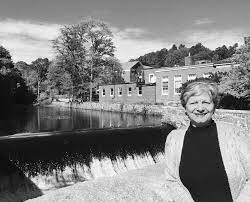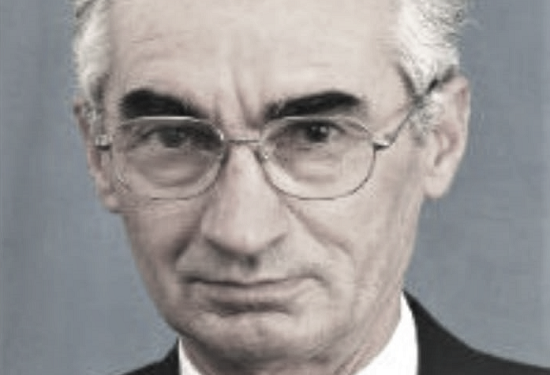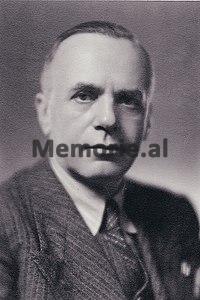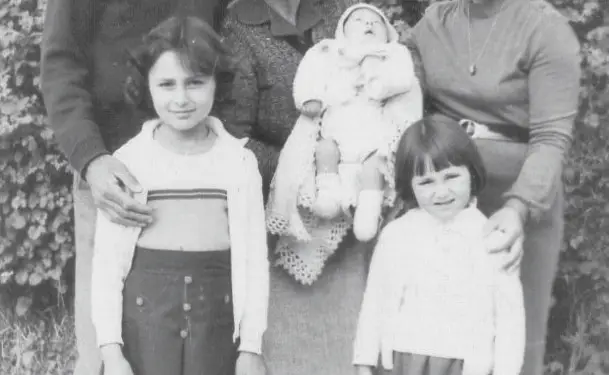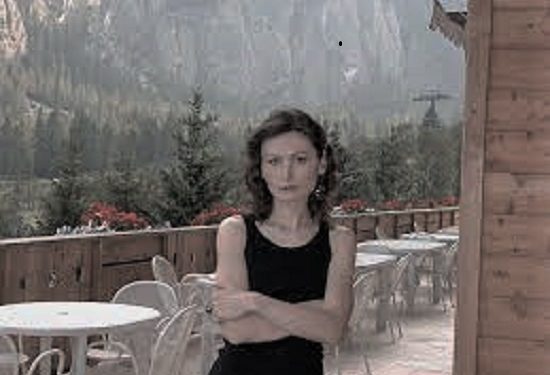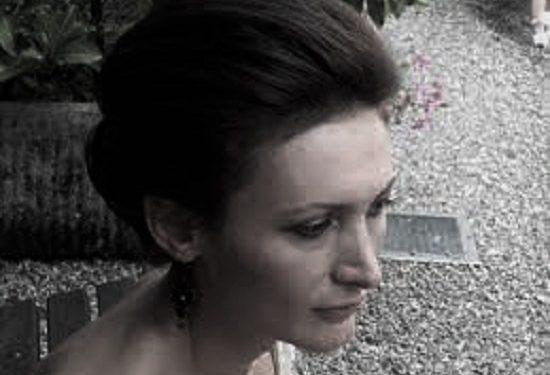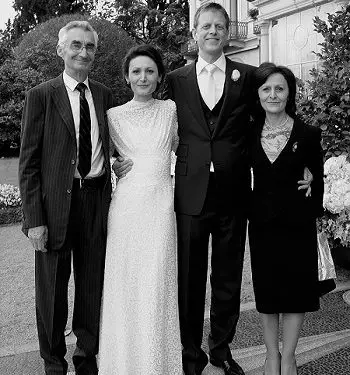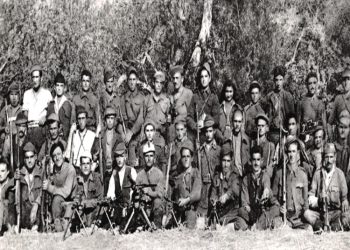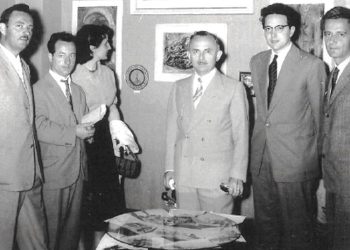By Julia GJIKA
Part One
Memorie.al / In February 2011, an Albanian friend of our family, Mr. Evgjen Merlika, sent me a sheet of the “New York Times” newspaper, in which his daughter Edira was photographed, leaving the “Ralph Lauren” fashion show, for which she works. The photographer was Bill Cunningham, the 82-year-old most famous reporter of this newspaper. My heart filled with joy, for the fact that a young Albanian girl caught his attention, and even more so I was curious to know something more about this girl, about whom I had read a few lines, in my father’s memoirs in the book published in Albania, “A Life in Dictatorship”. Through my father, I got in touch with Edira and discovered that she has been working as a manager in the fashion field since 2000, after graduating from the “Bocconi” University in Milan.
In 2005, she participated in the writing of the book “In Search of a New Cultural Horizon” (author Ardian Ndreca) describing her work, and then in 2006, she wrote a column in the magazine “Spektër” about famous women for their style in the world. Unfortunately, after 3 issues, her column was closed because, as the editorial staff explained, Albanians are not interested in the history of style, but rather they want to know what is in trend, what colors they like and what clothes to wear.
Edira refused to write something different from her idea because she believes that Albania today needs to learn the history of style, because the taste for beauty and refinement does not come from the ability to spend money, but from a sense of the soul, which is created and cultivated over time. Culture is never too much.
This is the interview she sent me, in the hope that her achievements will be an inspiration and hope for young Albanians in Albania and everywhere in the world, who must believe that nothing is impossible, if desired and pursued with serious and honest work.
The past is important, but hope in the future is even more important for the new generation. Reading this interview, I felt a piercing pain for her past and a revolt, for the fact that the values she mentioned have no place in post-dictatorship Albania.
In most newspapers, magazines, television channels in today’s Albania, the exploits of the people who worked to strengthen the communist dictatorship continue to be echoed, as if it were a time of great successes, as if these people were and are heroes, etc.!
On the other hand, the first place in fame is held by the members of “Big Brother” and other shows that remain far from true values and instill in the minds of the youth a distorted view of success.
Edira is the great-granddaughter of Mustafa Merlika Kruja, a patriot who had served his homeland with dedication for 29 years (1910-1939) and was considered an enemy and traitor, because he agreed to serve only 13 months, as prime minister of Albania occupied by Italian fascism, to save what could be saved.
He was sentenced to death in absentia, by the people’s court in 1945, while his family members were cruelly treated in prisons and concentration camps during the dictatorship. There were many victims like these…! Their lives must be known, they must be written about, often and more often.
Knowing their suffering, their resistance, will help us become freer citizens, more democratic, more valuable to society and the homeland. It seems that good seed does not spoil and so today we can speak with pride about the great-granddaughter of Mustafa Kruja who, within her means, contributes to the rise of Albanian dignity in the world in which she lives.
Edira Merlika, was born in Lushnja on June 29, 1976, and lived in an internment camp in Grabian in that district, until the age of 14. She is the first daughter of Evgjen Merlika, the grandson of Mustafa Merlika Kruja, and Teuta Agolli, who, in addition to her, also had a daughter, Elena, and a son, Besandr. Her parents worked as agricultural workers. Her mother, a passionate dressmaker, was the first to instill in her a love of fabrics, embroidery and everything related to the world of clothing. She and her Italian grandmother, a literature graduate, would be her only role models for style during her childhood.
In 1990, she came to Italy, where she enrolled in a Classical High School, starting at the University of ‘Luigi Bocconi’ in Milan, where she graduated in Business Economics, with a specialization in ‘Fashion Management’ and a thesis on the positioning of a luxury brand. At the same time, she deepened her own fashion culture by studying the History of Clothing and Fashion, a deepening that she always continued with immense passion.
After graduating, she managed to realize her dream of working in the world of fashion, starting at ‘Costume National’, moving a few months later to ‘Valentino’, and then to ‘Ralph Lauren’, where she is today the director of women’s collections for Europe. He lives and works in Milan.
Ms. Edira, how can you summarize your work for me?
-I work in the department called Merchandising. I deal with the content of the collections, which I follow together with the designers from the beginning, to make sure that we are creating something that will be liked and sold. After drawing the collection, I set the spending budget for each garment we create. This is the most difficult part, because we are dealing with very high figures.
Of course, a sense of taste and style is required and then, of course, ability with numbers. We always think about what people will wear in 12 months, so you need a certain vision of the future. Of course, it is not easy, as a wife and mother, to be often away from my family because of work, but with the help of my parents, I manage to organize everything.
-What is a typical day like in the office? And when do you travel?
I arrive at work at 9 a.m., after a 50-minute train ride because I live out of town. I usually spend my time on the train reading or working. During the day, I usually have meetings, one after the other, with my team members. Usually, the only time I have to myself is during lunchtime, unless it’s busy. Lunch lasts no more than 10 minutes. Then I have another meeting until 6 p.m. At that time, I leave because I want to run home to my family.
When I travel to Europe, I usually wake up at 5:30 a.m. to catch the first flight. A driver accompanies me to the airport and then comes to pick me up for dinner. We’ve become friends by now. Usually, half the time is spent visiting stores and half meetings. There’s never enough time to understand what’s new in our field.
When I go to New York, I leave in the morning at 10., 8 hours of flight and never arrive, I run to the hotel, change, do a little toilet to hide the red eyes from the flight and, I’m ready for two meetings before dinner. Hoping that at least dinner, I can spend it the way I want, but sometimes this is impossible because, we are with clients and we have to be in shape. By 10 am in New York, which for me is 6 am, I can go back to the hotel.
Sometimes when I’m not so busy, I use my free time to go shopping, or better yet, to visit places. I’m often told that this job is fantastic because, they don’t know how much physical and mental strength it takes to always be at your best, physically and in terms of preparation, not to mention the diplomatic side.
How did you decide to enter the field of fashion management?
-The field of fashion and style is part of the larger field of beauty. As Dostoevsky says: Beauty will save the world. Although I am convinced that he is talking about spiritual beauty, I believe that there is something good and high about the aesthetic sense as well. Since I was little, I have had a tendency to contemplate clothing, beauty, which is almost always associated with sweetness in my memories.
I was lucky to have the women of my family as models in this field. The first, my great-grandmother on my father’s side, Caje Merlika, a noble woman in spirit and body. Always dressed in black (her fourth son, Besimi, died in 1944, at the age of 19, of a poor mother), with skin as white as snow, not at all talkative, immersed in her memories, so never alone, in love with us.
Then my grandmother Elena Gjika, the most extraordinary woman I have ever seen. She was not only cultured and well-mannered, who when she spoke, silenced the men in Albanian masochistic society, but also had a special taste, inclined towards simplicity brought to the peak (less is more) that was not understood at all in Albania at that time, where style was unknown.
Remembering her clothes and looking at the photographs, it seems to me that I have before me a forerunner of Armani’s or Prada’s clothes of the golden years. She had remained connected to the 1940s of the 20th century, the most beautiful years of her life, and so she died. Then comes my mother, the spring breeze that entered the Merlika family, with the face of a fairy.
She never appeared at the table without a light toilet and without being dressed in an excellent manner. As soon as she returned from the mud field, she would devote the necessary time to her toilet and, as if by magic, she would transform into a wonderful lady. She had a special way of combining colors, completely different from the mothers of my friends. I would look at her without speaking and enjoy her beauty.
Although communism made it the duty of the country to violate aesthetics and beauty, as foreign micro-bourgeois expressions, it did not succeed with us. My mother learned to sew, because she could not stand that her daughters dressed in the standard clothes of our MAPOs. Everything we wore was created by her and my grandmother’s hands. Of course, we were the best-dressed children, also as a result of the clothes that my grandmother’s people and my father’s uncle and his wife generously sent us, despite the high customs duties that the state forced us to pay.
This became a cause for even more hatred, for some evil spirits of people who lived around us. I was my mother’s assistant in the tailoring. I learned, at the age of five, to sew and embroider, and so my mother sewed with a machine and I helped her by hand. In a short time, she became one of the most famous seamstresses in Grabjan. I was an “advisor” for the models we would sew. That’s how I got to know fabrics.
When I came to Italy, I started looking at magazines and stores and wanted to become a stylist. I continued to deepen my knowledge in the field of fashion in my free time, for fun. When I finished high school, I wanted to go to London to study styling, but my father and mother didn’t want me to. “Study economics – they told me – and then do whatever you want.” That’s how I ended up at Boccioni, the best university in Italy for economics, despite the high cost it required, which I paid thanks to the scholarships I won.
When I graduated from Boccioni, which is a ‘business administration school’, I realized that my path would be different. I would work in the fashion field, not as a stylist, but as a manager. I wouldn’t be the one who drew, but the one who dealt with business organization. This is the main axis of my activity today.
Have you participated in fashion shows and for which companies?
I have been regularly participating in the fashion shows of the companies I worked for, ‘Valentino’ and ‘Ralph Lauren’, for 11 years. In addition to these, I have participated in other shows, such as; ‘Alexander McQueen’, ‘Versace’, ‘Puçi’.
Are there any characters that have left an impression on you over the years?
Of course. Some of them are not well-known, but I can say that I was lucky to work in a circle of people, very prepared in terms of culture and management, enlightened people from whom I learned a lot. Of the famous characters, the most special was the late Isabella Blow. When she arrived at the ‘Valentino’ fashion shows, all eyes were on her. She seemed to come from another world.
Then Anna Wintour, the director of ‘Vogue’ of America, an icy woman. During the fashion shows, I often see her face waiting for a small smile, which usually does not arrive. Of the men, the one who has left a special impression on me is Tom Ford, the absolutely most elegant man I have ever seen. He also seems to belong to another world.
When you got married, where did you meet your husband, what is his name?
-My husband, his name is Graeme Hepburn; he is French from his mother, Scottish from his father. We met in 2006 and got married in 2010. When I worked at ‘Valentino’, we were in the same building and we always saw each other in the elevator, until one day, an acquaintance of ours, organized a meeting for us. I had thought of myself as a woman who would never get married, but as always, life surprises us.
Are you encouraged by your husband in your work?
-He definitely supports me a lot. His dream is to be able to earn enough so that we can stay at home with Alexandre and the other children that God may send us.
What is your little one’s name, how old is he, where was he born?
-Alexander Hepburn, our son, was born on June 23, 2009, in the town of Angera near Sesto Calende, where we live. Today he is almost three years old. Memorie.al
Next issue





